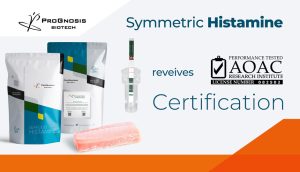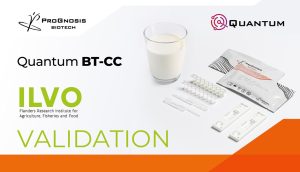The Evolution of Food Safety Legislation in China
China’s approach to food safety regulation has evolved significantly over the past few decades. The foundation was laid in 1982 with the introduction of the “Food Hygiene Law (Trial)”, followed by the official enactment of the Food Hygiene Law in 1995. This legislation aimed to enhance food sanitation, prevent contamination, and safeguard public health. (1)
However, growing public concerns and a series of high-profile food safety incidents, including the infamous 2008 Melamine scandal, highlighted the urgent need for a more robust regulatory framework. In response, the Food Safety Law was passed on February 28, 2009, replacing the previous Food Hygiene Law. This new legislation established stricter oversight mechanisms, particularly in the dairy industry, where consumer confidence had plummeted due to safety breaches. (2)
Aflatoxin M1: A Critical Concern in Dairy Safety
Among the key contaminants of concern in dairy safety is Aflatoxin M1 (AFM1). This mycotoxin is a metabolite of Aflatoxin B1 (AFB1), which is produced by Aspergillus flavus, Aspergillus parasiticus, and Aspergillus nomius—fungi that thrive in warm, humid conditions. (3) When dairy animals consume AFB1-contaminated feed, it is metabolized into AFM1 and excreted into milk, presenting a significant risk to consumers.
The International Agency for Research on Cancer (IARC) classifies AFM1 as a Group 1 carcinogen, meaning it has been proven to cause cancer in humans. (3) Long-term exposure has been linked to liver cancer and other severe health issues, prompting governments worldwide to establish strict maximum residue limits (MRLs) for AFM1 in dairy products.
China’s Regulatory Limits for AFM1 in Dairy Products
China has stringent AFM1 regulations under GB 2761-2017, which sets MRLs for different dairy products: (4)
| Food Category (name) | Limit (μg/kg) |
| Milk and milk products a | 0.5 |
| Special dietary | |
| Infant and toddler formula | |
| Infant formula b | 0.5 (in powder form) |
| Follow-up infant & toddler formula b | 0.5 (in powder form) |
| Infant formula for special medical use | 0.5 (in powder form) |
| Food formula for special medical use b (other than infant formula for special medical use) | 0.5 (in powder form) |
| Complementary nutritional supplements c | 0.5 |
| Sports nutrition foods b | 0.5 |
| Nutritional supplements for pregnant women and lactating mothers c | 0.5 |
| a. Milk powder should be converted into raw milk b. Products whose main raw materials are milk and milk protein products c. Restricted to dairy-containing products | |
A key regulatory aspect in China’s AFM1 limits is the lack of clarity on specific dairy product categories. While milk powder has a clear MRL of 0.5 μg/kg, other dairy products—such as yogurt drinks and cheese—do not have explicitly defined limits. As a result, many manufacturers adopt a precautionary approach, applying the 0.5 μg/kg MRL to final dairy products rather than just raw milk.
AFM1 Testing Methods in China
To ensure compliance with MRLs, China enforces GB 5009.24-2016, which outlines three primary methods for AFM1 detection in dairy products: (5)
✔ Isotope Dilution Liquid Chromatography-Tandem Mass Spectrometry (LC-MS) – Considered the gold standard for its high sensitivity and specificity. Widely used by research institutes and government regulatory bodies.
✔ High-Performance Liquid Chromatography (HPLC) – A highly accurate method used by third-party testing laboratories for AFM1 quantification.
✔ Enzyme-Linked Immunosorbent Assay (ELISA) – A fast and cost-effective screening tool, frequently employed by dairy manufacturers to test final products before market release.
In addition to these regulatory methods, lateral flow tests (LFTs) have gained widespread adoption in dairy production. Factories use LFTs for raw milk screening, followed by ELISA confirmation when a sample tests positive.
Stricter Industry Standards: The Influence of European Regulations
While China’s regulatory limit for AFM1 is 0.5 μg/kg, major dairy groups are voluntarily adopting the stricter European standard to align with global safety expectations. To meet these higher quality requirements, they are:
- Tightening controls on cow feed to reduce AFM1 risk at the source
- Increasingly establishing their own farms and ranches to gain greater oversight of raw milk sourcing.
Conclusion
China has made significant progress in its AFM1 detection and dairy safety regulations. With the advancement of analytical techniques and the adoption of global best practices, the country continues to tighten food safety measures. The use of cutting-edge detection technologies, combined with strict regulatory enforcement, strengthens China’s ability to protect consumers and uphold dairy product integrity.
As food safety challenges evolve, continuous innovation, regulation, and industry collaboration will be essential in ensuring a safer dairy supply chain for both domestic and international markets.
Discover our Aflatoxin M1 products.
References
- Food Hygiene Law of the People’s Republic of China. 中华人民共和国食品卫生法 (www.gov.cn)
- Introduction to the Legislative Process and Main Contents of the Food Safety Law. 食品安全法立法过程及主要内容介绍 (samr.gov.cn)
- F. Campagnollo et al. “The occurrence and effect of unit operations for dairy products processing on the fate of aflatoxin M1: A review.” Food Control (2016), Vol. 68, 310-329.
- GB 2761-2017. Chinese National Standard for Food Safety – Limits of Mycotoxins in Food.
- GB 5009.24-2016. Chinese National Standard for Food Safety – Determination of Aflatoxin M in Food.




